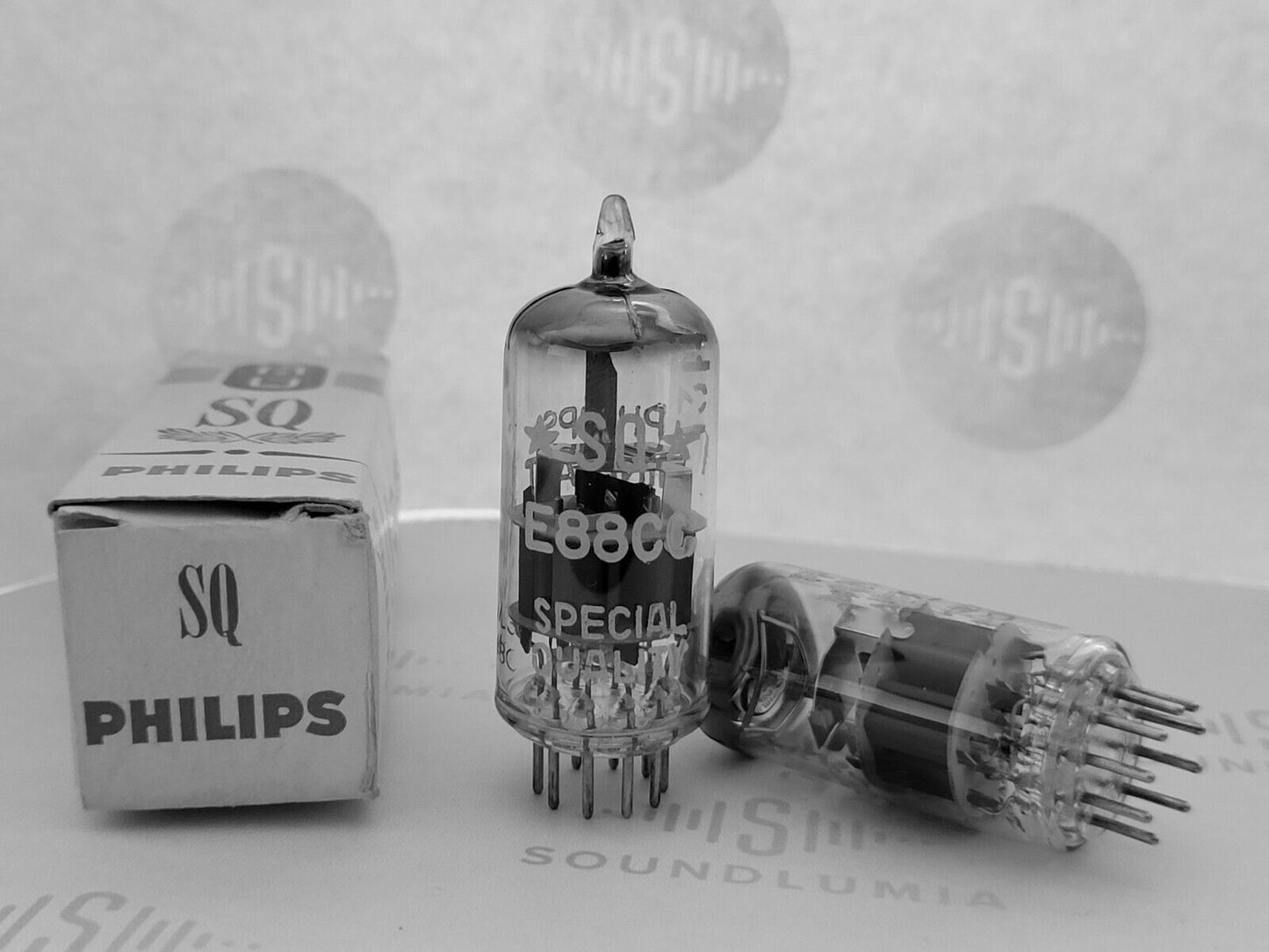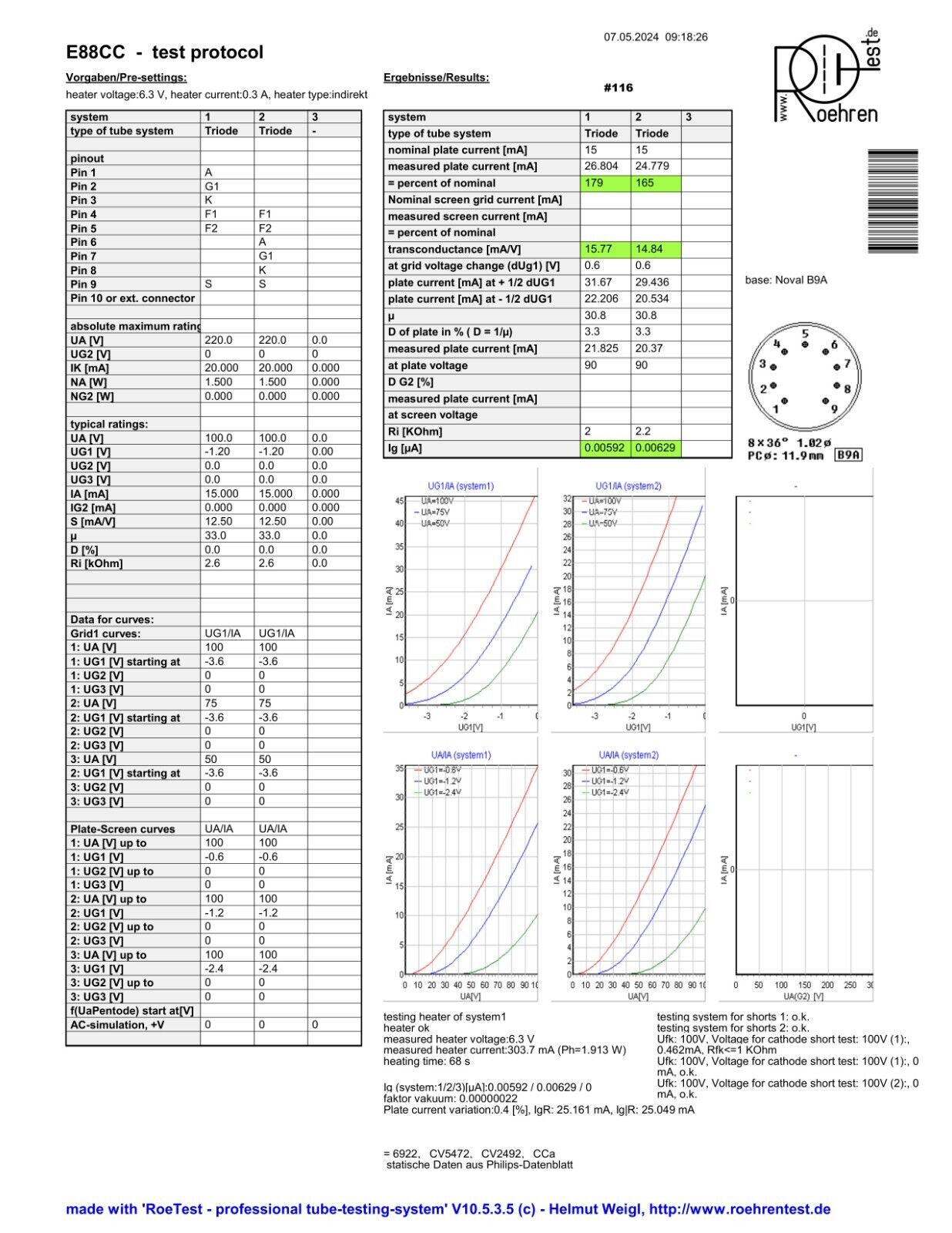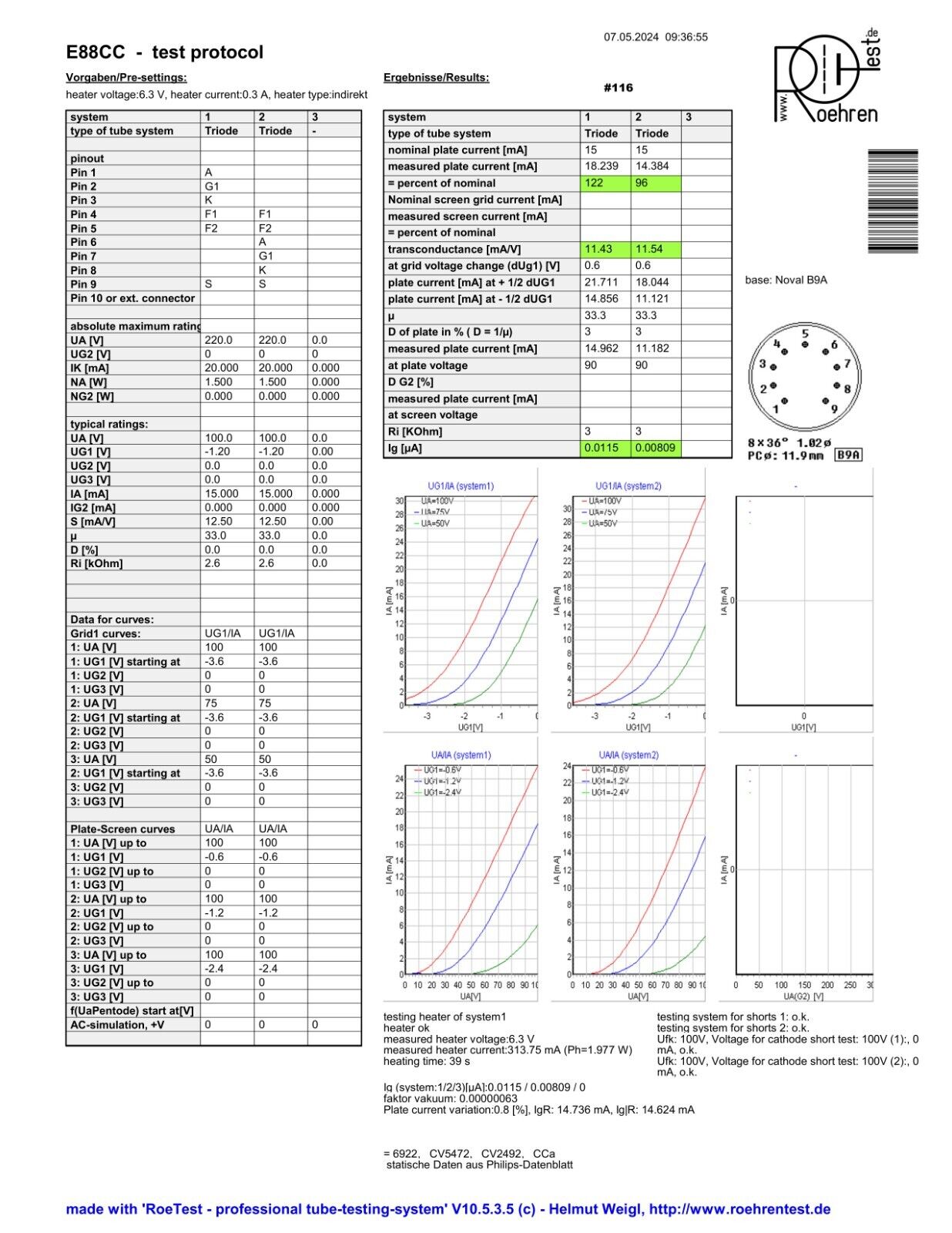Philips
2x Philips Miniwatt SQ E88CC = 6922 D-getter - Heerlen, NL 1958/59 7L4 - NOS
2x Philips Miniwatt SQ E88CC = 6922 D-getter - Heerlen, NL 1958/59 7L4 - NOS
Couldn't load pickup availability
Immediately appealing is the super smooth highs offered by these tubes with lots of open air. The overall tonality of SQ is warm, musical and euphonic. The midrange displays some secondary octave nuances, which is very unique and can hardly be found even among the top-end German tubes. Similar to the Telefunken tubes, the SQ's can create infinite levels of harmonic depth and a liquid sonic texture without altering the musicality of the sound. The bass on these is the clear winner of the Heerlen tubes family: articulate, accurate, deep, textured, full-bodied and powerful. The sound stage is wide and structured - it feels the dimensions of the sound shape are clearly defined no matter how it moves.
Vocal representation on the SQ's is close to Mitcham and Blackburn Mullard tubes in terms of warmth, sweetness and texture, making them great alternatives to Mullard's as the best vocals tube. But what truly shines on SQ tubes, especially the ones from the 1960s like this pair, is their magic in portraying piano music: creamy smooth, richly colored, realistic and intimate. For many audiophiles (incl. ourselves), they're the go-to tube for piano sound. Listening to Claudio Arrau's Beethoven Complete Piano Sonatas on these tubes should be on your bucket list if you happen to be into classical piano music, but even if you are not, these tubes' superb "interpretation" of piano music from any genre will amaze you.
The ultra low noise on SQ's also sets them apart from most of the high-end tubes. They don't just compete with Telefunken tubes in low noise; they're known for being a long-term leader in low noise. As a result, you get superb detail and clarity from these tubes as well.
Professional Sound Evaluation
Share




















